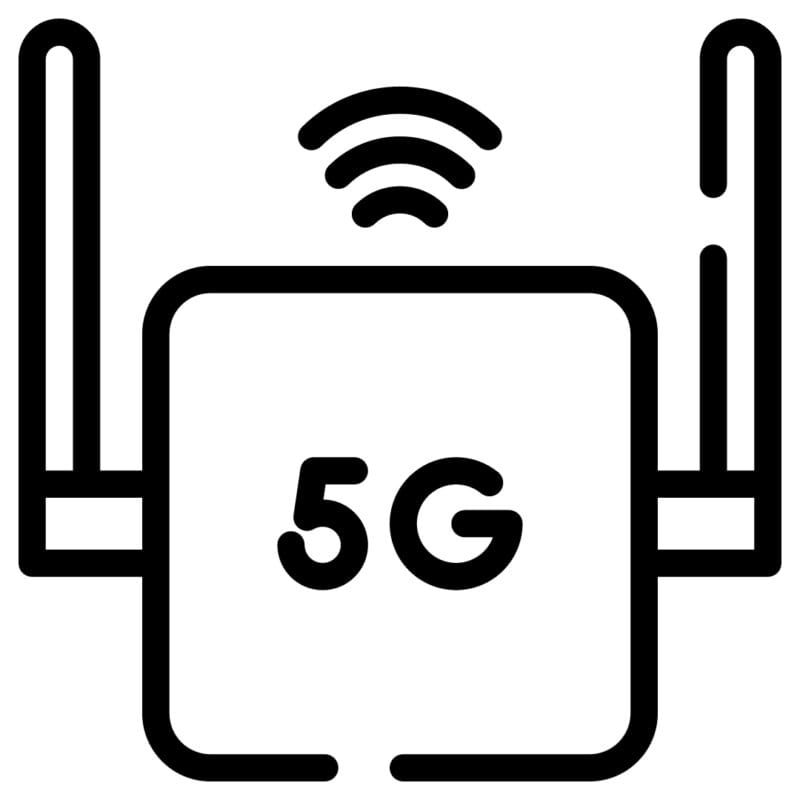What Is the Last Mile Problem?
For connectivity, the last mile problem is the gap between a service provider’s infrastructure and an end-user’s home or business. Until recently, service providers were unable to bridge that gap in many rural areas because the cost of doing so was simply too high. Instead, homeowners and businesses with high bandwidth requirements had to shoulder the expense of pulling fiber optic cables to their location.
There are now alternative routes to solving the last mile problem, namely Fixed Wireless Access (FWA) through 5G networks and LEO satellite connectivity through providers like Starlink. Each of these solutions – fiber, cellular, and satellite – have distinct costs, advantages, and limitations. This blog will break down the pros and cons of each, then present an argument for a hybrid approach that minimizes expenses for end-users while maximizing bandwidth and uptime.
Fiber: Everyone’s Favorite (If They Have Access)

In press release for new research by the American Customer Satisfaction Index, Michigan State University Marketing professor Forrest Morgeson declared that “across the entire customer experience, fiber service shows a strong advantage—from data transfer speed and service reliability to touchpoints like call centers and websites.” The problem, of course, is that the last mile challenge is particularly difficult to solve with fiber.
In cities, local governments are hesitant to dig up roads and disrupt traffic to lay fiber cables. Rivers and railroads present even more costly and complex challenges. Reaching rural areas with fiber requires negotiating land use across great distances with large numbers of private owners and local governments. After contending with delays and expenses for installation, these fiber networks remain vulnerable to accidental fiber breaks from road maintenance and construction.

The result of these challenges is limited availability of fiber, especially in rural areas, and higher costs. At present, less than 50% of US households have access to fiber internet. Businesses that opt for fiber internet connections for rural branch locations often face high service costs if they are able to find a network provider at all.
5G: A Promising Solution to the Last Mile Problem
5G cellular connectivity has the potential to solve the last-mile problem entirely. The theoretical peak data rate for 5G is 20 gigabits per second. There is no need to dig up roads and challenges related to rivers and railroad tracks are avoided altogether. Once 5G coverage is extended to a new area, most end-users can access it using a plug-and-play router without the need for an installation engineer. Costs for 5G internet are kept relatively low because the same 5G infrastructure used for FWA can also be used for mobile networks.


This combination of convenience and relatively low cost makes it an attractive choice, even for some customers in cities where fiber internet is available. In those markets, it is also capable of providing connectivity in several applications where fiber is either impractical or impossible to use. For example, 5G is a perfect fit for short-term connectivity at locations such as construction sites and music festivals. It also solves connectivity challenges for rail and other vehicles.
The facts above show that 5G can solve the last mile problem in theory. In the real world, however, challenges remain. In 2023, the US ranks fourth in the world for 5G availability, with a 5G connection available to users 31.1% of the time. Getting strong cellular coverage in remote locations will be a major challenge moving forward.
Average 5G speeds are not always ideal either. The US lags behind other markets in this area, ranking 47th with average 5G download speeds of 138 Mbps. Average upload speeds are just 17 Mbps. In many countries, 5G speeds are actually falling as the growth in the number of users outpaces the development of network infrastructure.
LEO Satellite: Starlink, Viasat, and More Bridge the Last Mile from Orbit
Low Earth Orbit (LEO) satellite internet from companies like Starlink provide yet another promising solution to the last mile problem. Their satellite constellations have the potential to bring high-bandwidth, low latency internet with connection speeds of up to 1 Gbps to any location on earth. In locations where geographic challenges make traditional connectivity infrastructure prohibitively expensive to build, LEO satellite connectivity provides incredible advantages. Similar to 5G FWA, it’s also incredibly quick and simple to deploy.


The problem with relying on LEO satellite for essential connectivity is a mismatch between supply and demand. In many areas, demand is growing faster than service providers can increase total available bandwidth. This results in inconsistent upload and download speeds and, at times, complete service outages. Waiting lists for these services make it clear that the challenge of meeting customer demand while maintaining robust connectivity will not be resolved in the near future.
Why Choose Just One? Benefits of a Hybrid Approach
The number and quality of connectivity options continues to increase. However, it is clear that each comes with its own distinct advantages and drawbacks. For truly resilient, high-bandwidth connectivity, a flexible hybrid approach is often the only complete solution.
In areas where fiber is available, it’s plausible for a company to assume that a single connection can meet their bandwidth needs. However, accidental cable damage from excavation can cause loss of connectivity for lengthy periods of time. For consumers and businesses that require constant connectivity for essential activities, this is disastrous.
5G FWA and LEO satellite connections can provide high-speed connectivity, but they are both vulnerable to network congestion as demand continues to outpace their ability to increase total bandwidth available to their user base.
SD-WAN technology makes it possible to take advantage of the benefits from fiber, cellular, and LEO satellite connectivity while addressing the shortcomings of each. For cellular connectivity, the networks of multiple service providers can also be leveraged to ensure the best possible connection.
With a robust network management platform, expenses can be controlled by prioritizing least-cost connections and setting specific conditions for each connectivity source to be used. With Bandwidth Bonding technology, it is even possible to combine all available connectivity sources into a single unbreakable data pipe. When it is absolutely essential to maintain connectivity for business activities or public safety, the clear choice is not one of these connectivity options. Instead, it’s as many of them as possible, bonded together using the most cost-effective, reliable method.
Want to talk to someone about connectivity solutions or partnership opportunities with FrontierUS?
Fill out the contact form below and a member of the FrontierUS team will reach out to you promptly.



